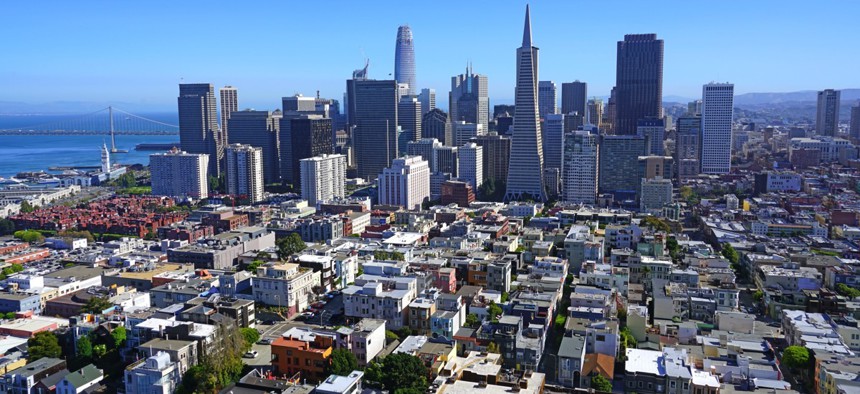San Francisco's Path Forward to Close Its Digital Divide

San Francisco, California

Connecting state and local government leaders
The city will consider two public-private municipal fiber alternatives to a high-risk, purely public network.
Officials in San Francisco are considering three citywide gigabit internet models that would see the service publicly owned, universally accessible without discrimination and leased wholesale to qualified providers.
A report released earlier this week by Kensington, Maryland-based telecom contractor CTC Technology & Energy details how fully private or public delivery models would fail to meet San Francisco’s goals.
Instead, the report outlines two public-private procurement strategies as alternatives to a high-risk, purely public municipal fiber network: a dual lit and dark-fiber network, as well as a dark-fiber only network.
“Every San Franciscan deserves fast and affordable Internet,” said Supervisor Mark Farrell in the announcement. “The private sector has failed to close the digital divide, so it is up to government to intervene and build a network with San Francisco values that provides more choice, competition, and higher quality services at a lower cost.”
The dual network would be more complex for the city to design, procure and deploy and cost more with an average $51-per-month residential connection fee and $73-per-month business connection fee covering all project costs. Though the residential fee could reach as high as $67 per month and as low as $26 depending on final costs.
Upon substantial completion a dark fiber milestone payment between $1.09 billion and $1.63 billion would be required followed by an annual $27 million-a-year to $45 million-a-year availability payment for 30 years. At the same time, the lit fiber milestone payment would fall between $123 million and $176 million and the annual availability payments between 42 million-a-year and 76 million-a-year for 30 years.
By comparison, the purely public fiber-to-the-premises design cost would run between $1.8 billion and $1.9 billion for just lit and $1.4 billion and $1.5 billion for only dark fiber.
A public-private, dark-fiber only option is the cheapest model of the three but could see less competition on the open access network than the dual public-private alternative. Residential connection fees would fall between $15 and $37 a month and business connection fees between $21 and $54 a month.
With 13.2 percent of San Francisco residents living below the poverty level and large chunks of neighborhoods lacking even minimal 200 Kbps service, the report’s cost estimates account for providing 15 percent of the city’s population with reduced-price or free internet.

Before choosing a preferred model, Farrell will offer a public hearing for residents in early November, and potential private partners will be given two chances to provide feedback on options and cost estimates to see if additional efficiencies and savings can’t be found. Those will be held the week of Nov. 13 and shortly after Thanksgiving.
Following that will be a competitive procurement period.
“All our City’s residents deserve fair and equitable access to this crucial resource, regardless of where they live or their economic status,” Mayor Ed Lee said in a statement. “We must continue to explore and push forward a plan that can deliver internet service in an open and responsible manner.”
Dave Nyczepir is a News Editor at Government Executive’s Route Fifty and is based in Washington, D.C.

NEXT STORY: Will smart city investment pay off?





